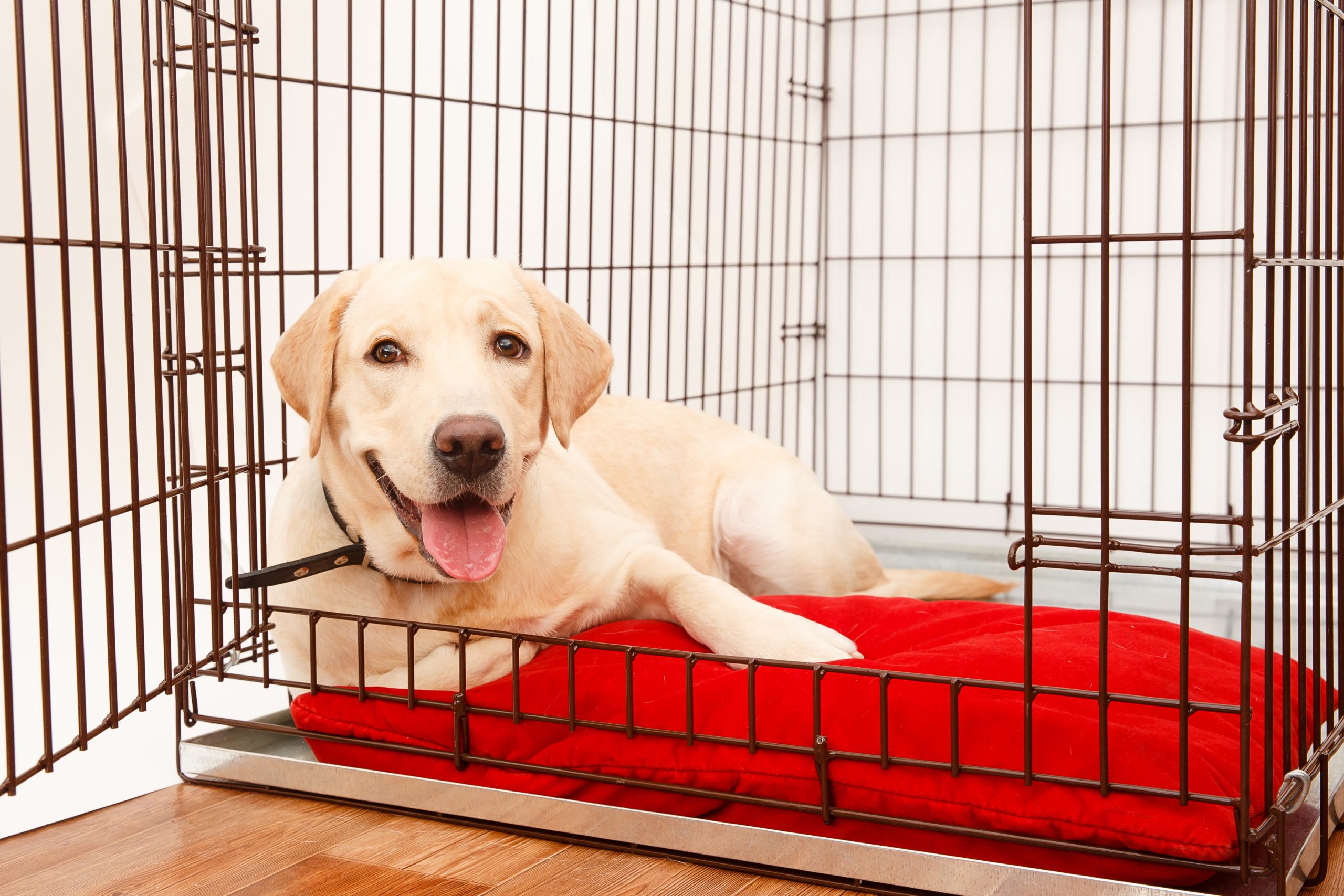If you have very small children or children who continue to treat a new dog roughly, then it is a good idea to crate train your dog.

Crate training allows you to keep the dog and children separate when you are not free to supervise them. It also gives your dog a safe place to go to get away from children if they have had enough.
Make sure that the crate is large enough for your dog; they should be able to stand up and turn around easily.
- At first, feed your dog in the crate and throw toys and treats in to encourage your dog to run in, without shutting the door.
- Gradually increase the time that you encourage your dog to stay in the crate. For example, teach your dog to lie down and wait, then reward them with a treat while they are still lying in their crate.
- When they are happy to lie and wait for several minutes’ try shutting the door and then reward them by opening it if they are calm.
- Gradually increase the time that you shut the door and then start walking away and build up the time that they are left in the crate.
If your dog whines a lot when you put them in the crate do not be tempted to reward them by letting them out. Ignore them until they are calm and then open the door.
If they are getting very distressed, then go back to training with the door open until you feel that they are more settled about going into their crate.
It’s also a good idea to put your dog in the crate during meal times, especially if you have a baby being fed from a high chair. Toddlers find it great fun to throw food for the dog, but this often results in a dog who will constantly beg and may even jump onto a high chair to get food.
If you keep the crate in the kitchen, then training can be easily fitted in around everyday life and can be really beneficial in the long run.
